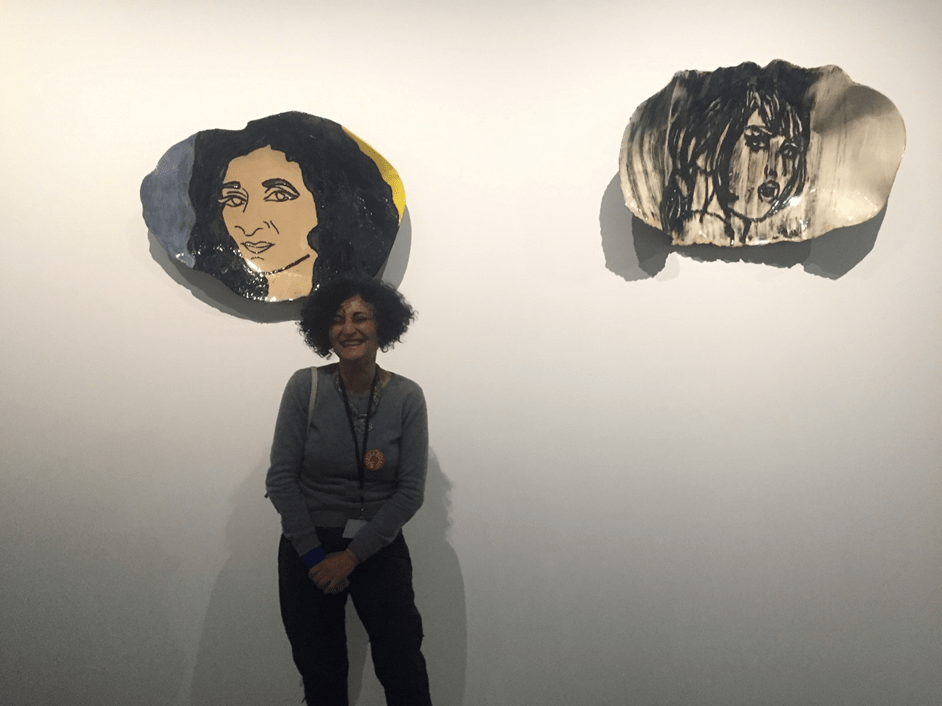Works by the Franco-American-Egyptian artist are exhibited for a first retrospective in France in three Marseille museums: the Mucem, which hosts the eastern part, the Frac, which exhibits the feminist part, and the Vieille Charité, which houses its sculptures. The curators of the exhibition and the artist herself welcomed Gomet’ on Thursday for a press visit, one day before the opening to the general public.
Pierre-Olivier Costa, new president of the Mucem, welcomes the initiative: ” it is an exceptional exhibition because the artist is exceptional. You will find everything there: embroidery, sculpture, sewing, garden… The themes addressed such as identity, women and their place in society are at the heart of the Mucem’s concerns. “.
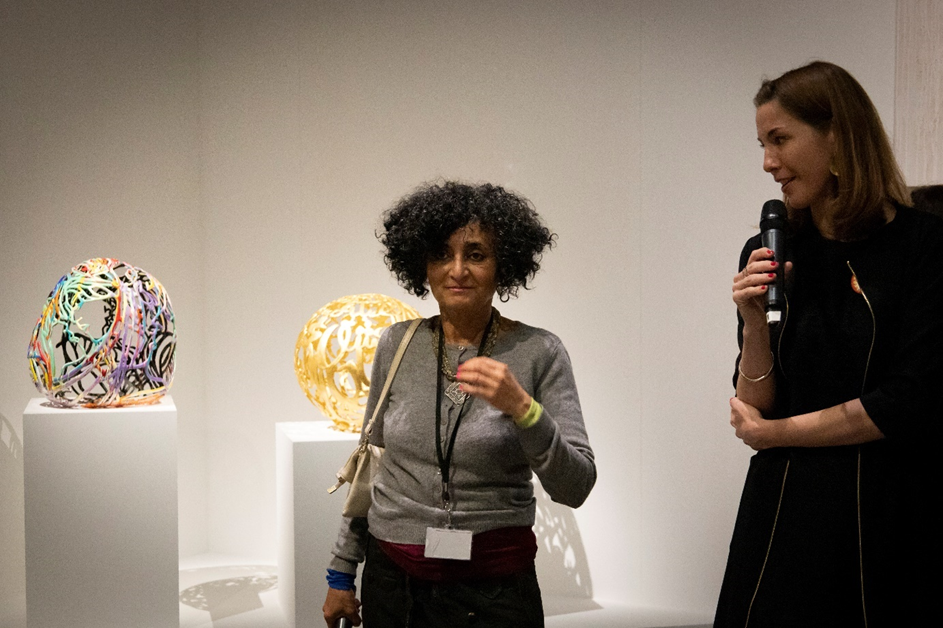
The first work of Ghada Amer which is offered to the public upon his arrival at the Mucem is an outdoor garden open since the Heritage Days. Immortelles are planted there, forming an Arabic phrase. The artist has in fact taken up a feminist demand seen on a banner during a demonstration in Cairo during the Arab springs “explains Hélia Paukner, curator of the exhibition. ” It is the diversion of an adage attributed to the prophet ‘the voice of the woman is a source of shame’. By changing just one phoneme, Ghada transforms the sentence into: ‘the woman’s voice is revolution’ “, she adds. ” The charcoal used recalls the fire of the revolt and the stake in which women convicted of witchcraft were burned. “.
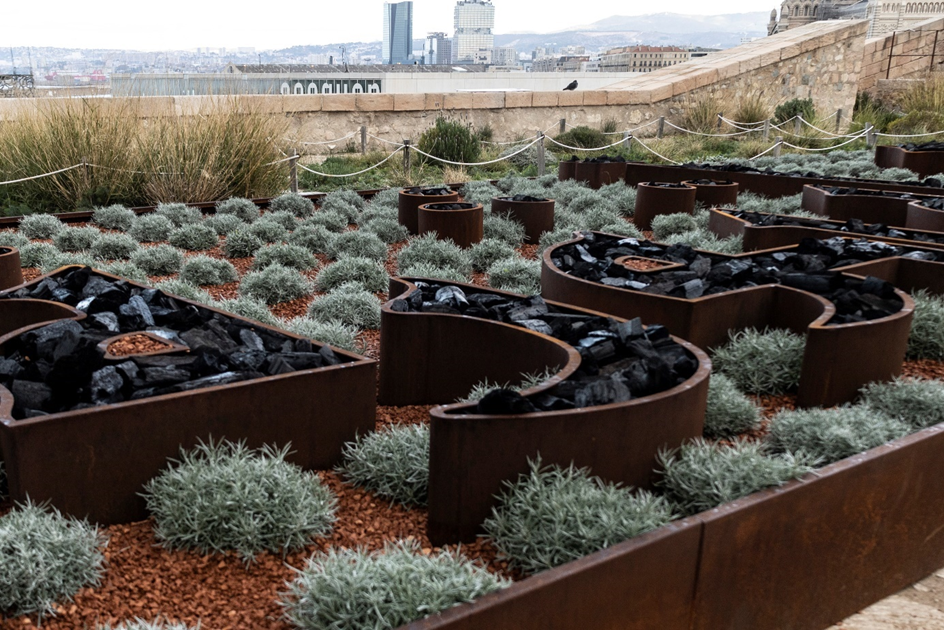
In the part exhibited at the Mucem, Ghada Amer tries to ” deconstruct the radical, binary and sterile opposition between West and East “, explains the commissioner. The exhibition begins with a curved lounge, which is the lounge traditionally used to welcome foreigners to Egypt. The walls surrounding it are covered with inscriptions which are in fact definitions of the word terrorism. ” At the time she made this show, Ghada was living in the United States and hearing about the war on terrorism used by Bush to justify strikes in the Middle East. She felt stigmatized and seen as a terrorist as an Egyptian “, explains the commissioner.
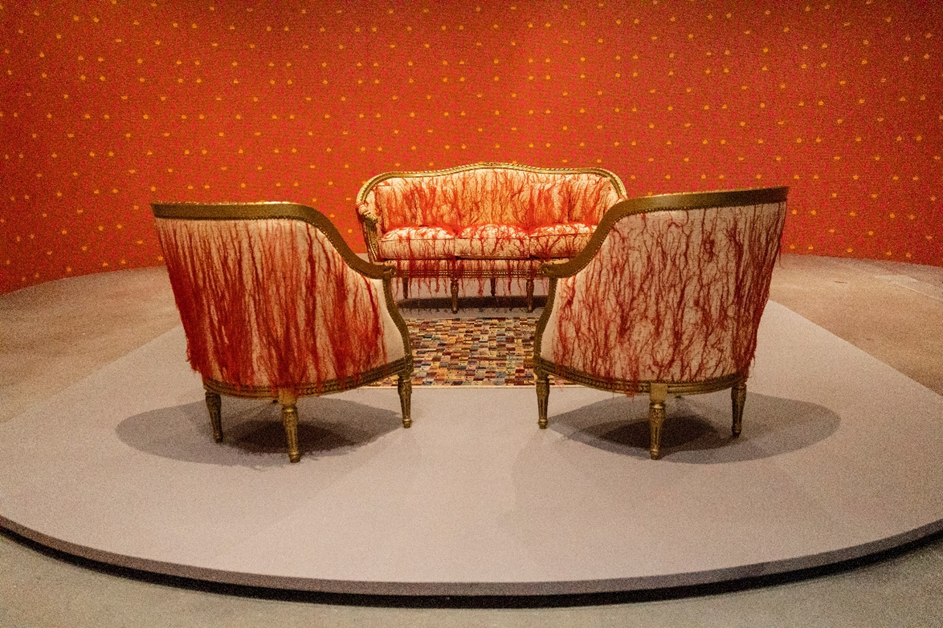
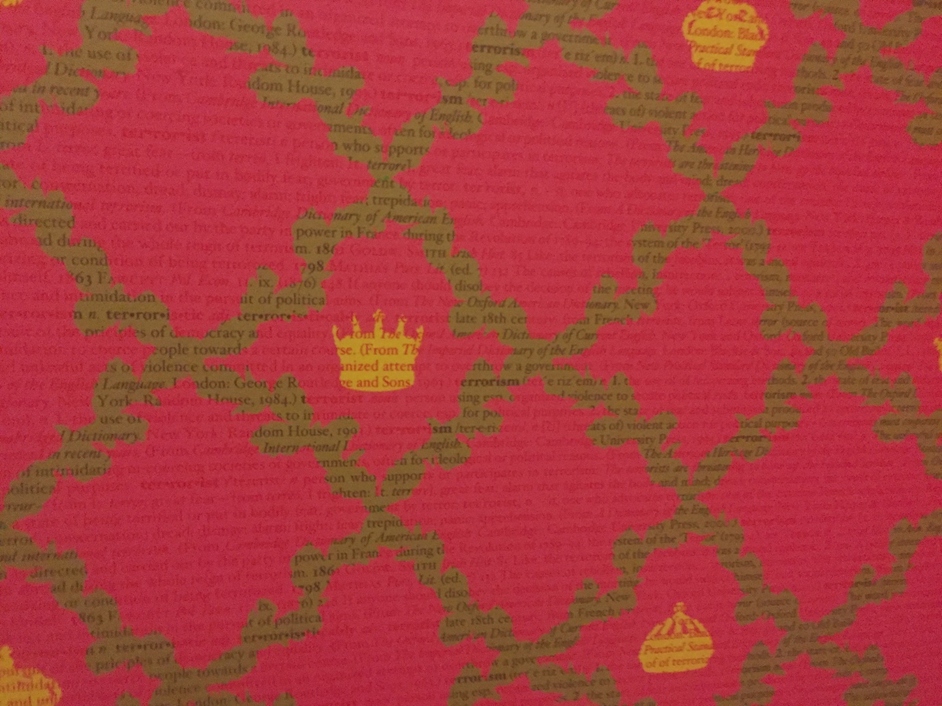
After moving to France at age 11, the artist regularly returned to Egypt to see her family. In the 90s, she was struck by ” the radicalization and increase in the number of women who wear the veil “, explains the commissioner. Ghada Amer then had the idea of creating the veil ” that she would have worn if she had been forced to. On the black lace yoke, she embroiders the word fear “, observes the commissioner.
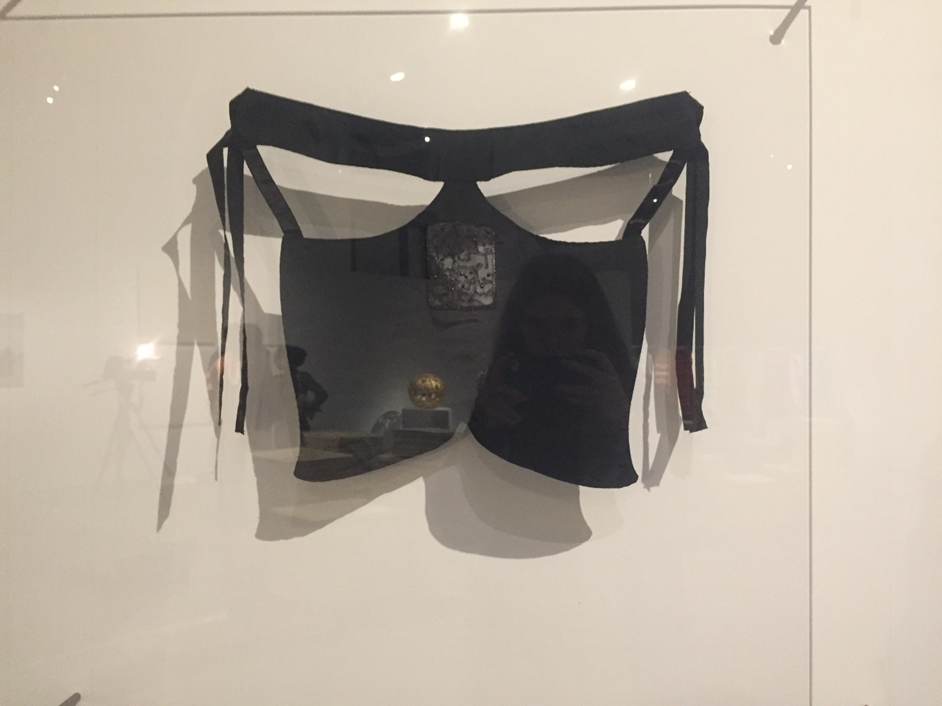
While studying in Paris, Ghada Amer noticed the weak presence of artists from the Arab world in Paris. She decides to perform a performance with an Iranian artist: they put on a black veil and go to openings and to tourist places. They then realize the stereotypes and negative connotations that the veil has in the West.
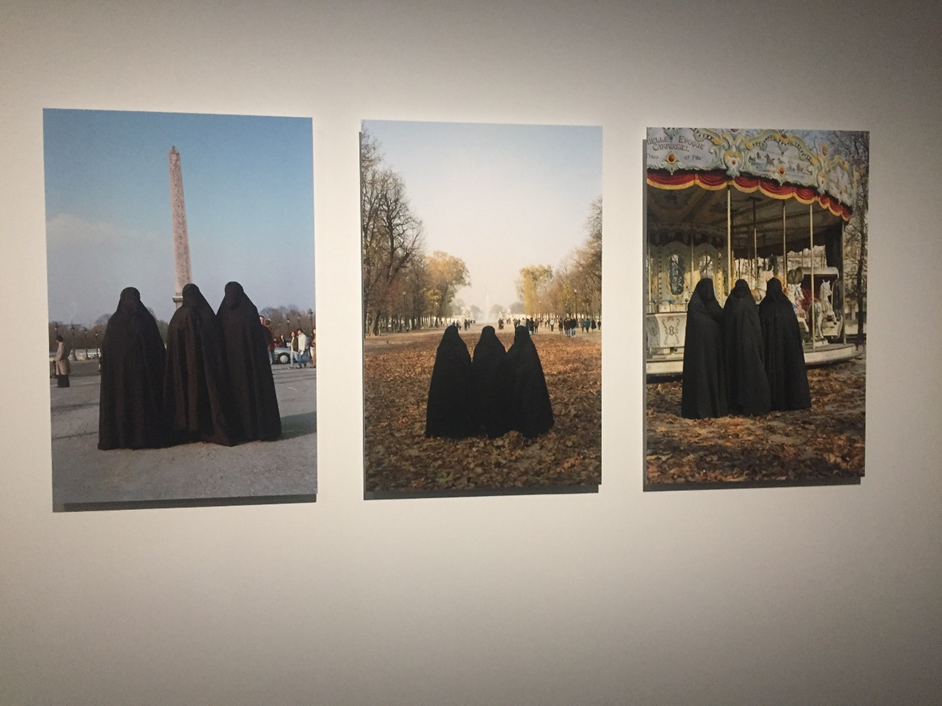
The artist then produced four canvases to counter the negative clichés around Arab culture. She writes the definitions of the words peace, love, freedom and security to counterbalance the threats associated with Arab culture.
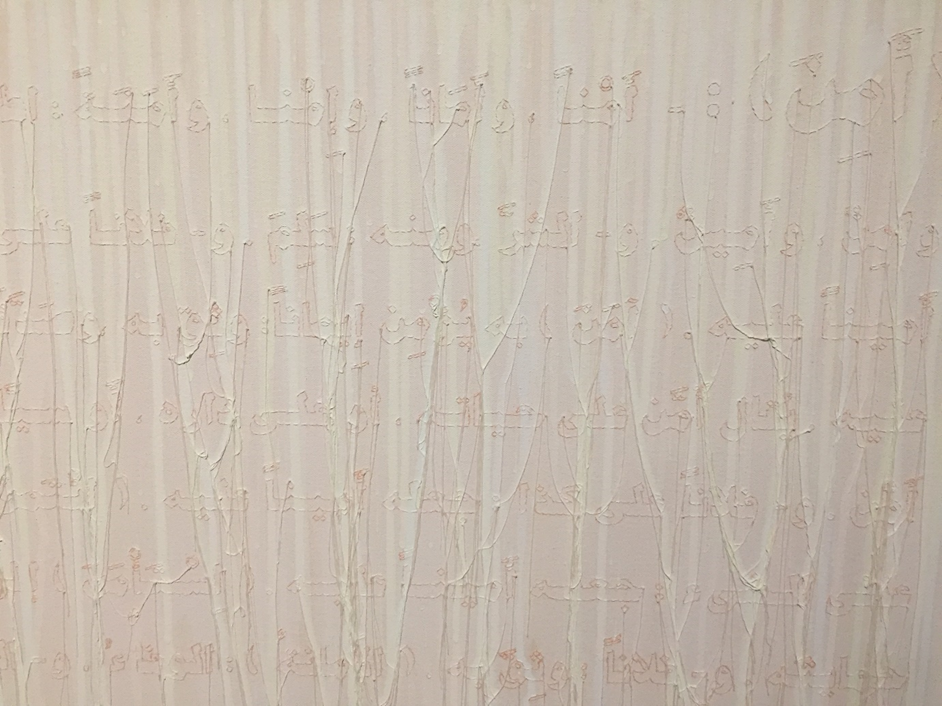
The artist says: there was real brainwashing after 9/11. I wanted to show that we weren’t terrorists “. It is for this same reason that Ghada Amer has made sculptures on which are written about thirty words meaning “love” in Arabic.
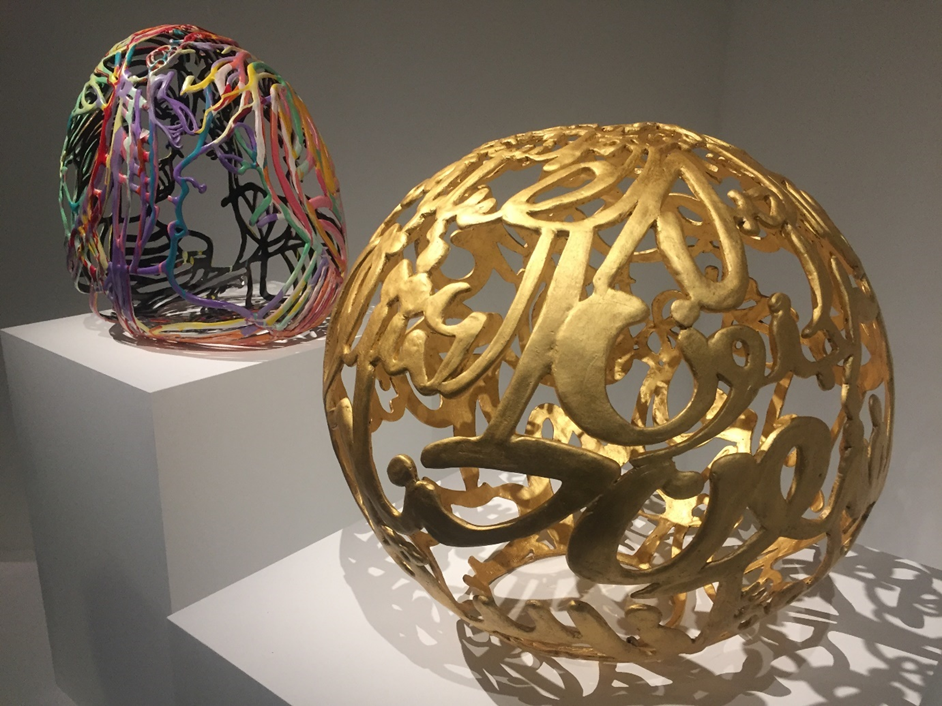
In the room of the Mucem where the works are exhibited, we also find, scattered in the center, moving boxes representing the movements of the artist between Cairo and New York, on which are embroidered phrases taken from the encyclopedia of pleasure. . ” These are excerpts from one of the first collections of erotic texts in Arabic. This text is censored and banned in Arab countries. Ghada has chosen passages that speak of sexuality and female pleasure “, explains the commissioner. Ghada adds: one culture saves the other. Books were burned during the Inquisition. I was able to find this collection in Canada “.
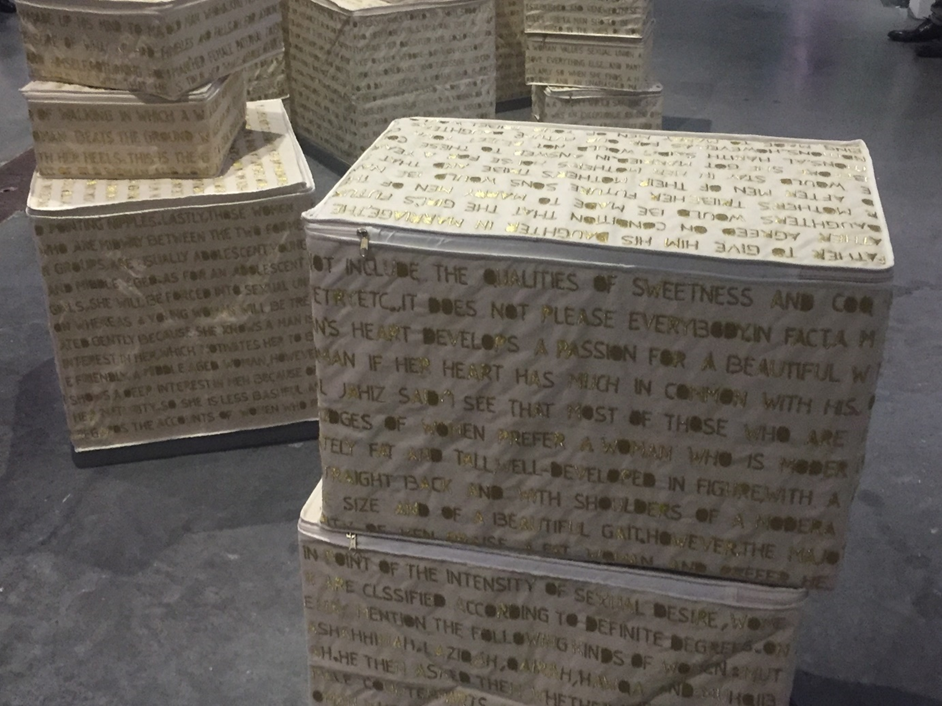
For another of his works, Ghada Amer embroiders suras from the Koran to invite knowledge. ” What emerges is that the woman is neither totally submissive nor totally celebrated. There are no hasty conclusions or clichés “, explains the commissioner.
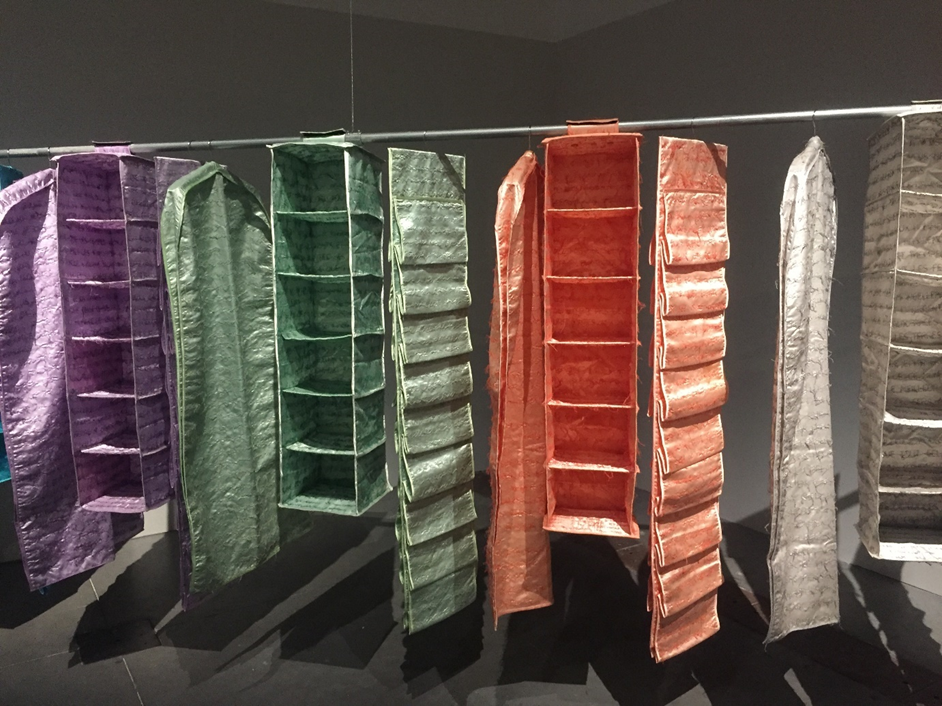
Other canvases by the artist represent embroidered naked women, “ which is already a very strong political position in the face of Arab culture. »
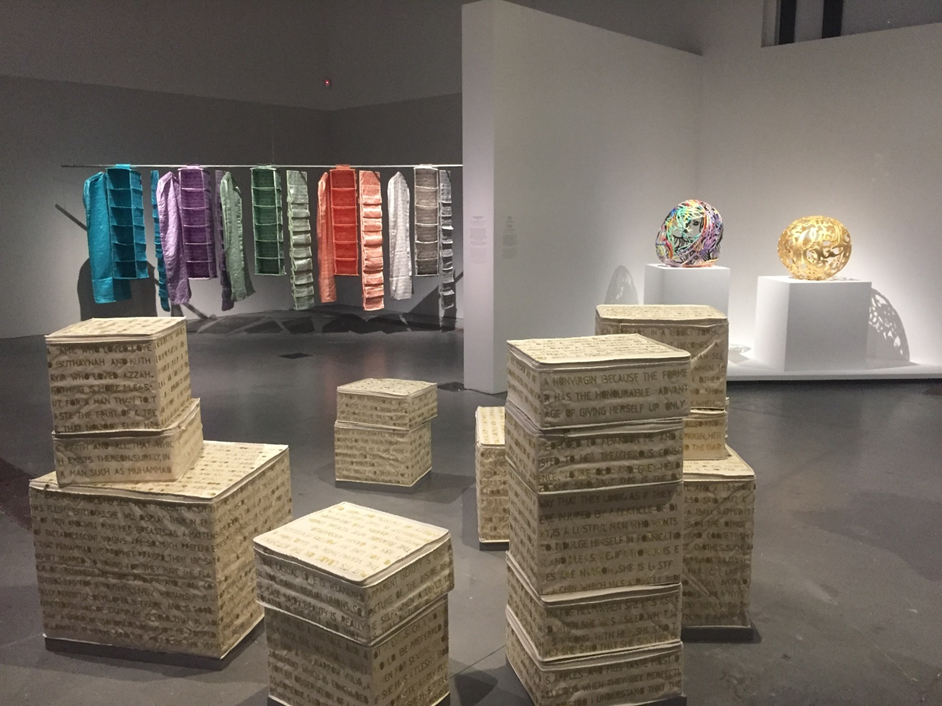
Ghada Amer initially addressed a Western audience, believing that there were no feminists who could hear her in Egypt. However, after the Arab Spring, the artist began to address an Arabic-speaking audience. On some of her paintings, we find feminist quotes, such as that of Simone Veil “we are not born a woman, we become one”. Ironically, a quote from Saddam Hussein is also on display. ” He was a feminist “says the artist.
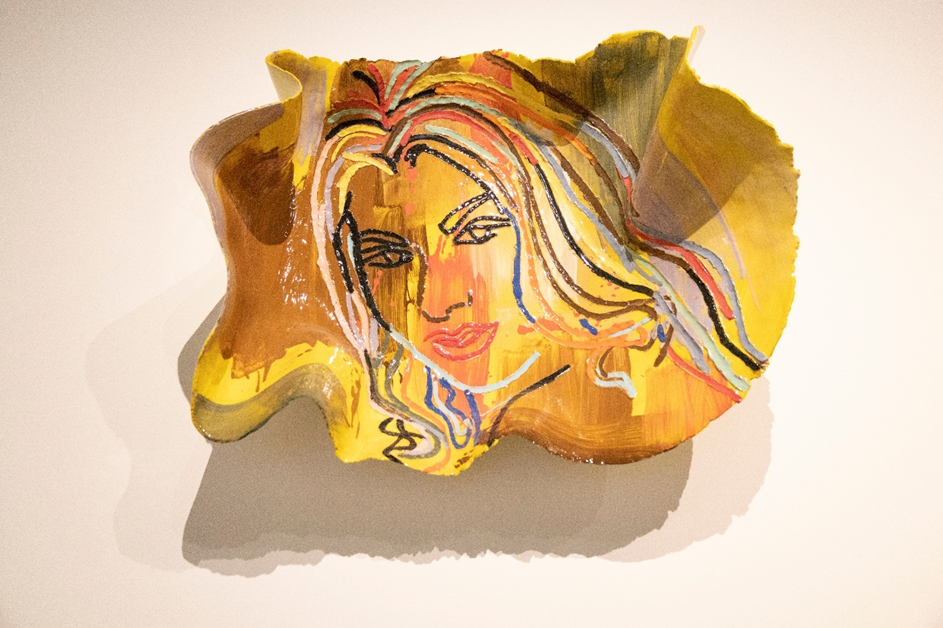
Ghada Amer has also been painting portraits of revolutionary women since 2016, who do not submit to patriarchy. She also represents women around her, who have little visibility, to show them and give them a voice. For example, it shows a veiled Egyptian woman, and inscribes the slogan “my body, my choice” on the portrait.
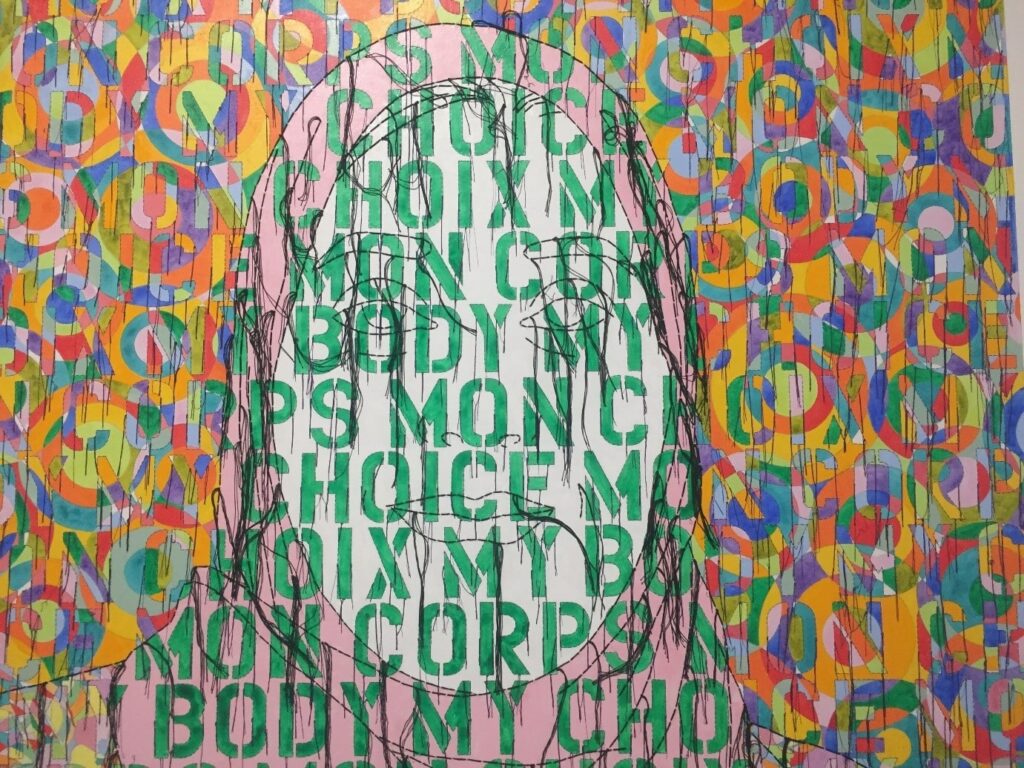
At the end of the Mucem exhibition, you can admire photographs taken in Egypt by the artist. She posts them every day on her Instagram.
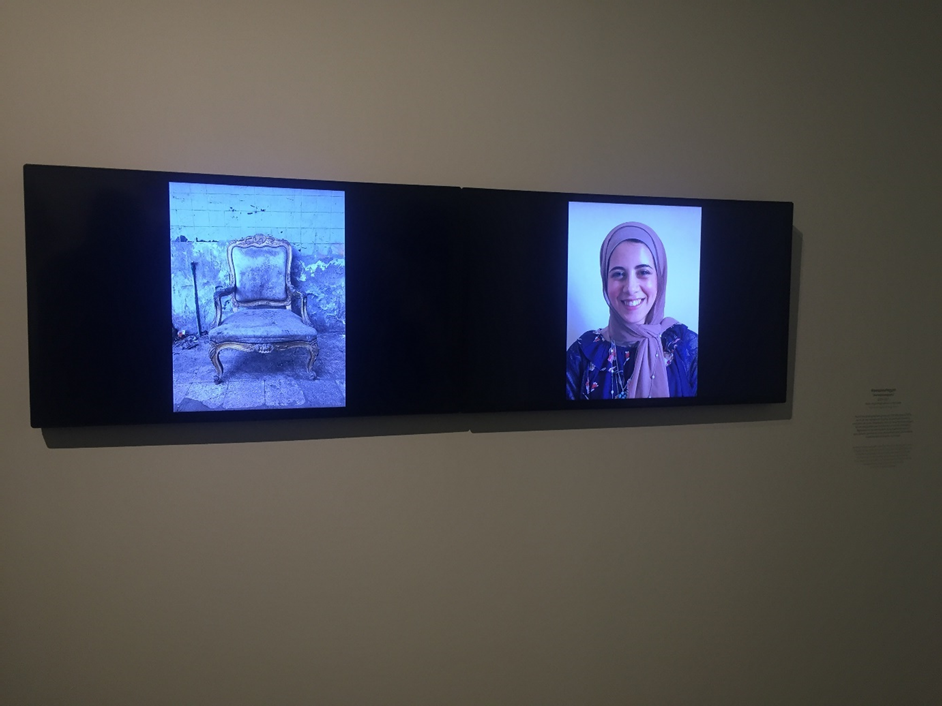
In the chapel of the Vieille Charité, in the heart of Le Panier, we find another aspect of Ghada Amer’s work: his sculptures. She took private lessons and was a resident for two years to learn this art. ” It’s very difficult and technical, but the sculpture allows me to escape from my political demands », explains the artist.
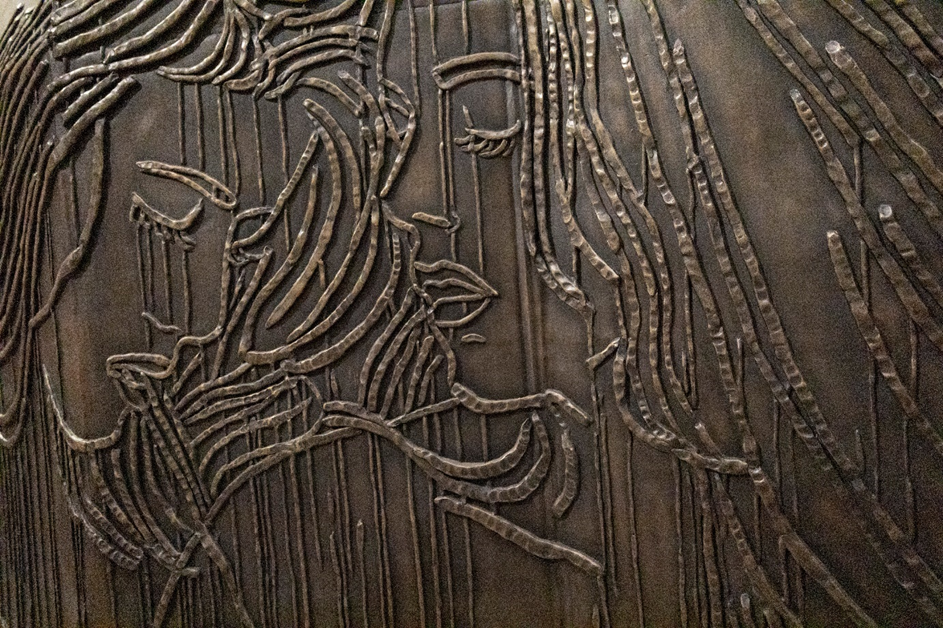
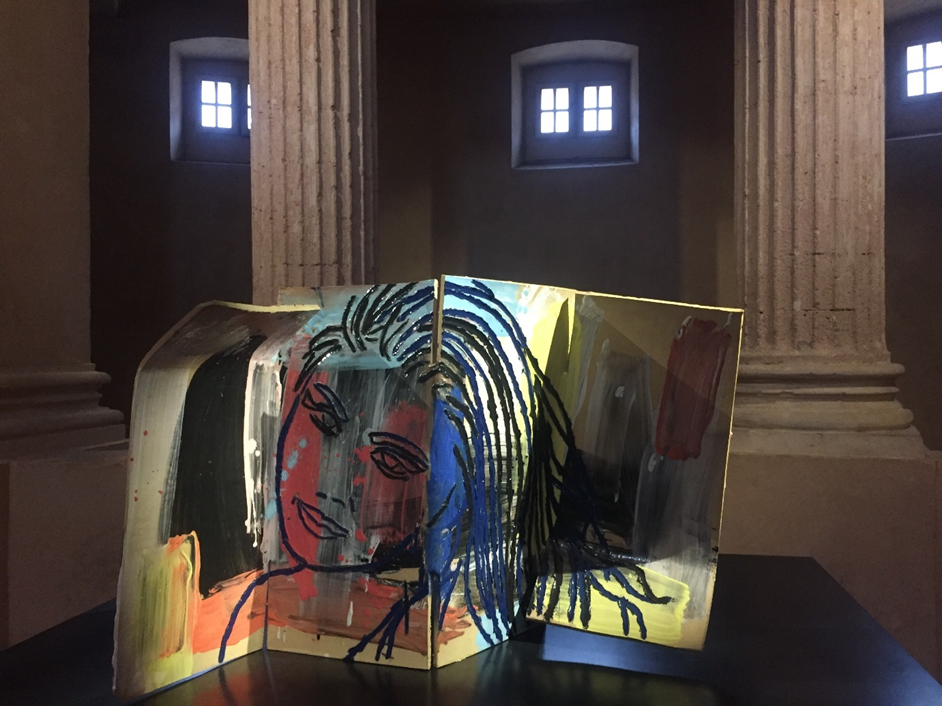
At the Frac, it is rather the artist’s feminist works that are exhibited. The exhibition is called “Witches and bitches”, a title that announces the color. ” The ‘witches’ and the ‘sluts’ are indeed two figures of powerful and strong women who have served to condemn and belittle women “, explains the commissioner.
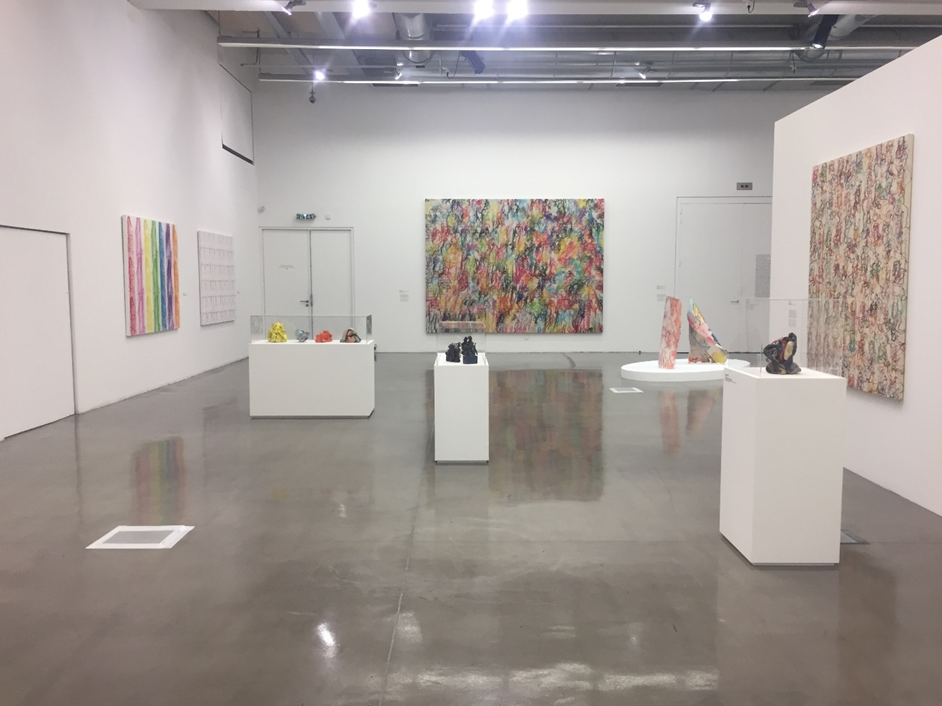
A student at the Villa Arson in Nice, Ghada Amer wanted to take painting lessons, which she was forbidden because she was a woman. In addition, she struggled to find books by women, minority artists. She therefore wanted to show that a woman could be a painter, by embroidering on canvas.
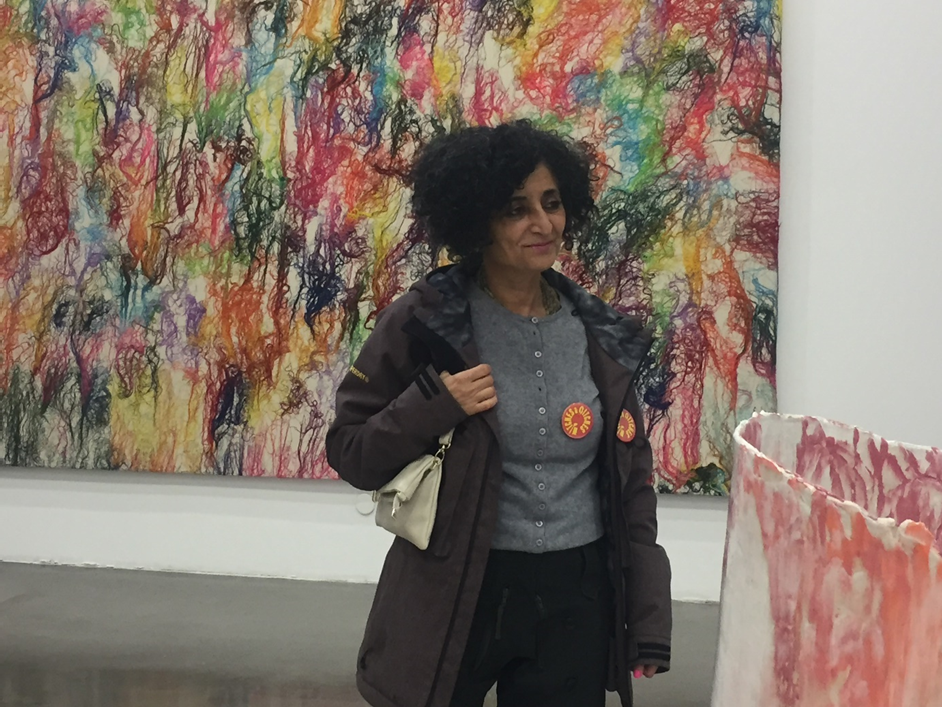
One of the first canvases that we see when entering the Frac exhibition hall is a self-portrait on which is embroidered the quotation of a televangelist, defining feminism: “ feminism encourages women to abandon their children, kill their husbands, corrupt capitalism and become lesbians “.
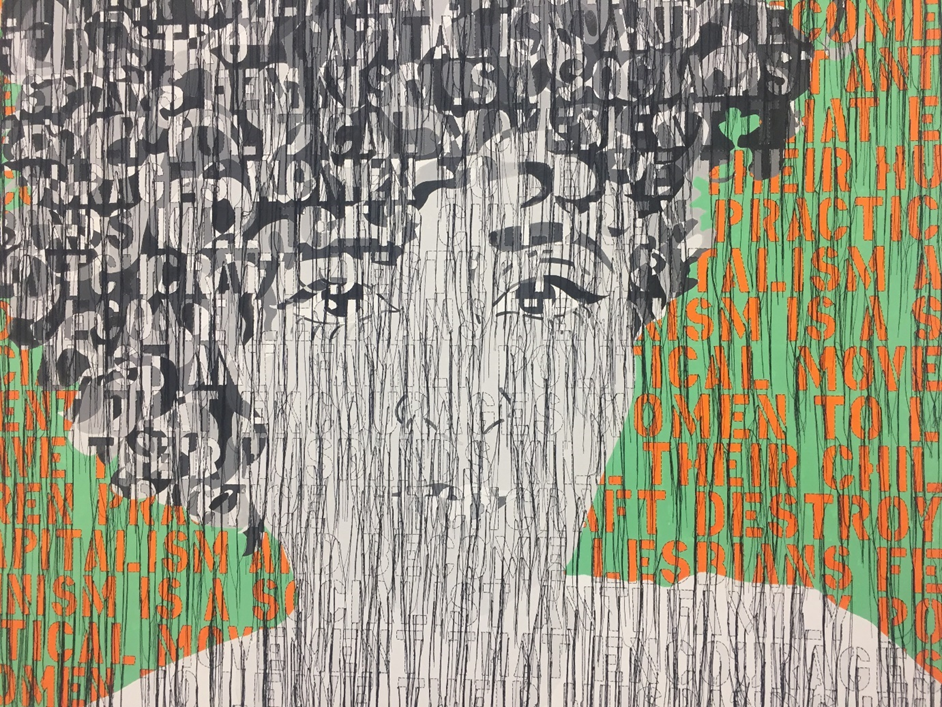
Throughout the exhibition, the artist goes against stereotypes and represents the emancipation of the female body and sexuality. It shows naked women, touching, kissing.
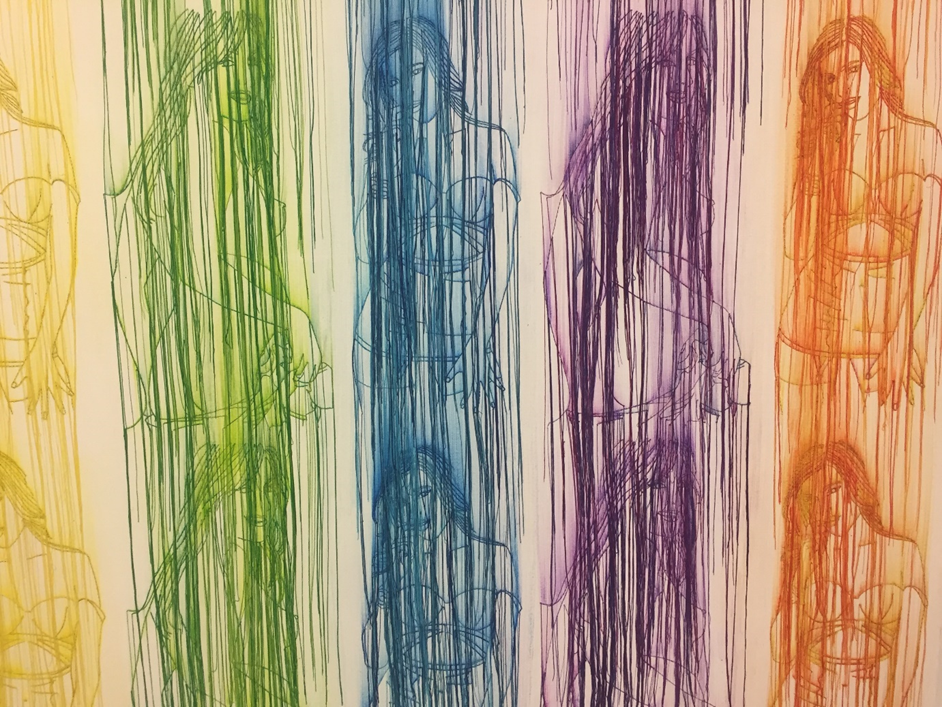
With the multiplication of colors used for its borderies, Ghada Amer wants to “ recall the painting from which women are erased “, she says.
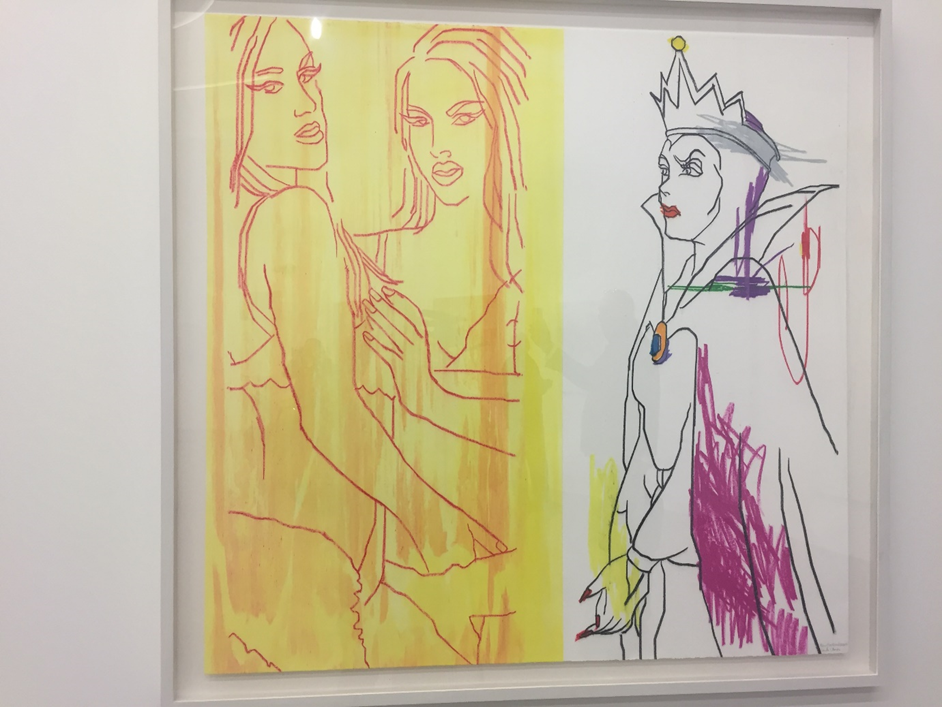
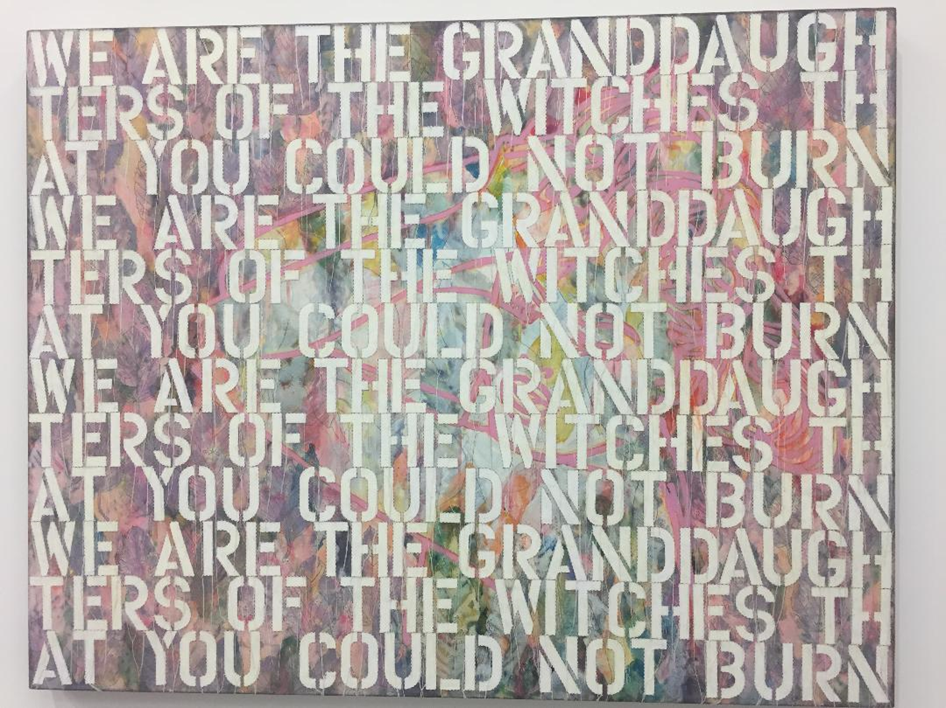
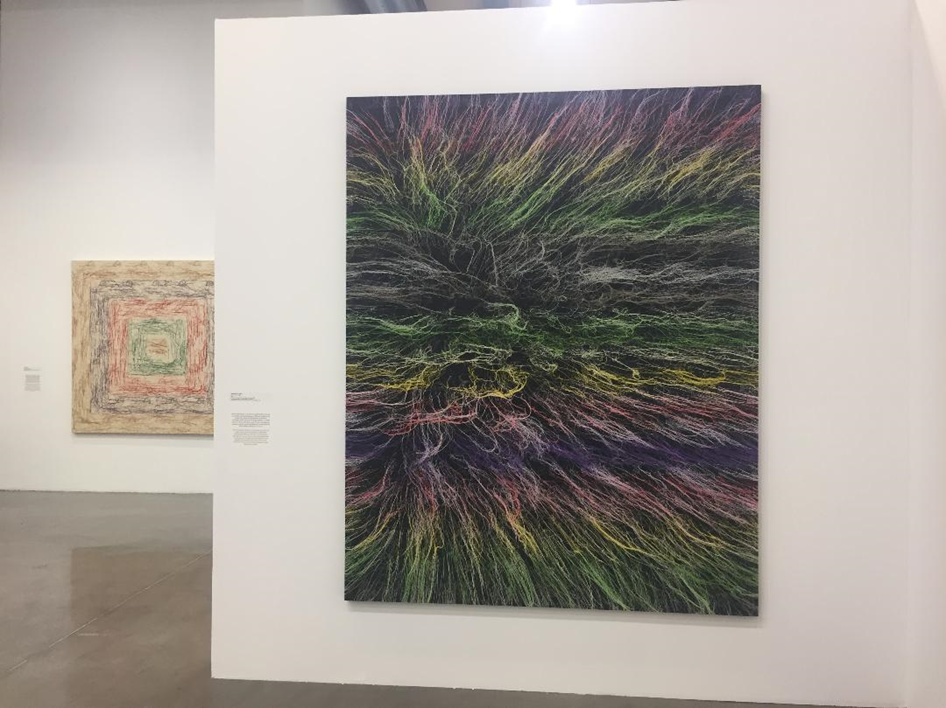
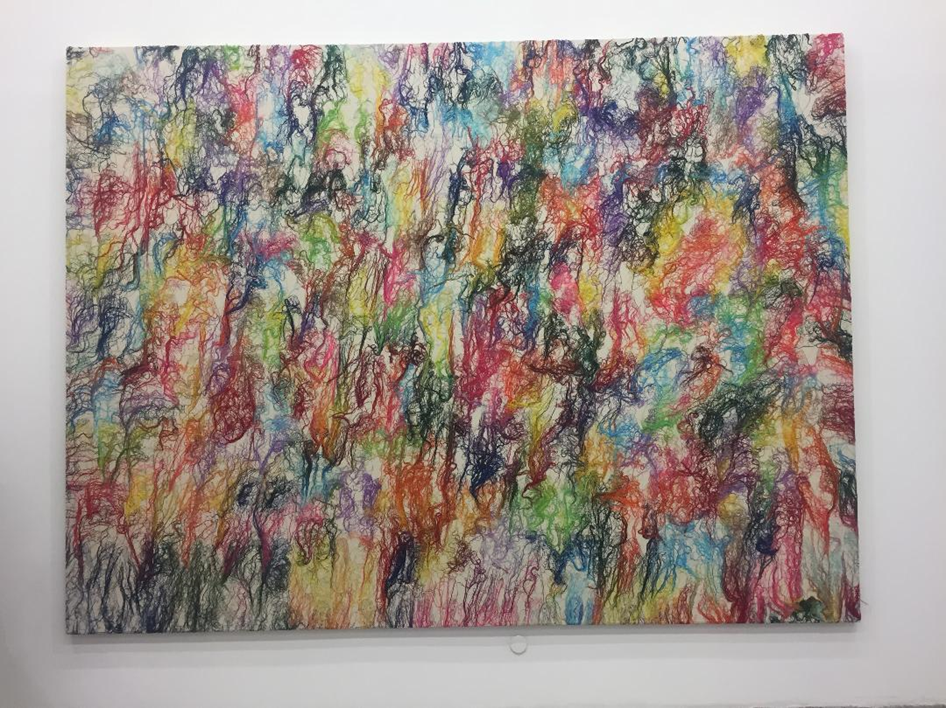
Useful links and practical information:
News exhibitions in our section
The website of the Mucem
At Mucem – Fort Saint-Jean, Georges Henri Rivière building and migration garden:
From December 2 to April 16, 2023 (320 m²)
“Ghada Amer, Orient – الشرق – الغرب – Occident” At the Frac Provence-Alpes-Côte d’Azur:
From December 2, 2022 until February 26, 2023 (1st floor platform – 280 m²)
“Ghada Amer, Witches and Bitches” At the chapel of the Center de la Vieille Charité:
From December 2, 2022 to April 16, 2023
“Ghada Amer, Sculptor”
We would like to say thanks to the author of this post for this amazing material
Mucem, Frac and Vielle Charité: Ghada Amer in Marseille in a magnificent triptych – Gomet’
Our social media profiles here , as well as additional related pages here.https://nimblespirit.com/related-pages/

